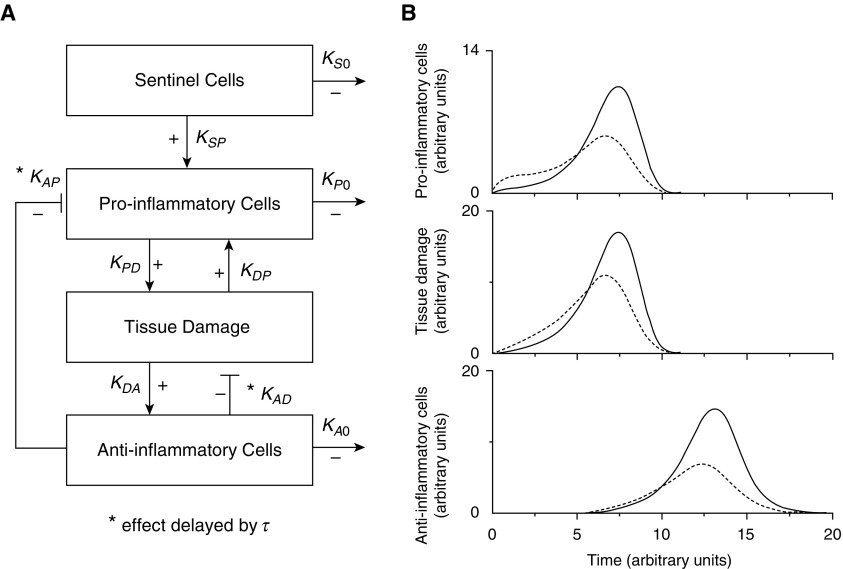Figure 1.
(A) A minimal model of the immune system that can exhibit a twitch-like response to the detection of a threat by sentinel cells (see the online supplement for technical details). (B) Response of the system under “baseline” conditions (solid lines) and during obesity (dashed lines), when the inflammatory milieu is increased, while the functional status of the immune system is decreased (see main text for details). Plus sign indicates pathways that are up-regulating; minus sign indicates down-regulation. Note that the latter applies to the pathways governed by the rate constants, KS0, KP0, and KA0, which indicate compartment sinks. KA0 = sink rate-constant for anti-inflammatory cells (arbitrary units); KAD = inhibitory rate-constant of antiinflammatory cells on tissue damage (arbitrary units); KAP = inhibitory rate-constant of antiinflammatory cells on proinflammatory cells (arbitrary units); KDA = stimulatory rate-constant of tissue damage on antiinflammatory cells (arbitrary units); KDP = stimulatory rate-constant of tissue damage on proinflammatory cells (arbitrary units); KP0 = sink rate-constant for proinflammatory cells (arbitrary units); KPD = stimulatory rate-constant of proinflammatory cells on tissue damage (arbitrary units); KS0 = sink rate-constant for sentinel cells (arbitrary units); KSP = stimulatory rate-constant of sentinel cells on proinflammatory cells (arbitrary units); τ = time delay of antiinflammatory cell action on tissue damage and proinflammatory cells (arbitrary units).

